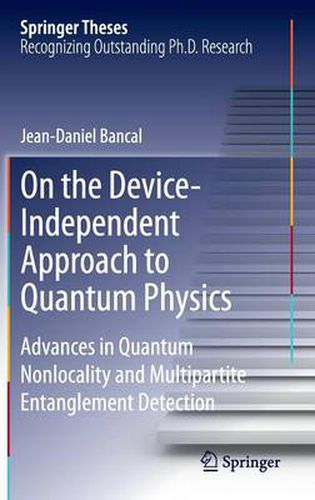Readings Newsletter
Become a Readings Member to make your shopping experience even easier.
Sign in or sign up for free!
You’re not far away from qualifying for FREE standard shipping within Australia
You’ve qualified for FREE standard shipping within Australia
The cart is loading…






This title is printed to order. This book may have been self-published. If so, we cannot guarantee the quality of the content. In the main most books will have gone through the editing process however some may not. We therefore suggest that you be aware of this before ordering this book. If in doubt check either the author or publisher’s details as we are unable to accept any returns unless they are faulty. Please contact us if you have any questions.
Quantum physics started in the 1920’s with wave mechanics and the wave-particle duality. However, the last 20 years have seen a second quantum revolution, centered around non-locality and quantum correlations between measurement outcomes. The associated key property, entanglement, is recognized today as the signature of quantumness. This second revolution opened the possibility of studying quantum correlations without any assumption on the internal functioning of the measurement apparata, the so-called Device-Independent Approach to Quantum Physics. This thesis explores this new approach using the powerful geometrical tool of polytopes. Emphasis is placed on the study of non-locality in the case of three or more parties, where it is shown that a whole new variety of phenomena appear compared to the bipartite case. Genuine multiparty entanglement is also studied for the first time within the device-independent framework. Finally, these tools are used to answer a long-standing open question: could quantum non-locality be explained by influences that propagate from one party to the others faster than light, but that remain hidden so that one cannot use them to communicate faster than light? This would provide a way around Einstein’s notion of action at a distance that would be compatible with relativity. However, the answer is shown to be negative, as such influences could not remain hidden.
$9.00 standard shipping within Australia
FREE standard shipping within Australia for orders over $100.00
Express & International shipping calculated at checkout
This title is printed to order. This book may have been self-published. If so, we cannot guarantee the quality of the content. In the main most books will have gone through the editing process however some may not. We therefore suggest that you be aware of this before ordering this book. If in doubt check either the author or publisher’s details as we are unable to accept any returns unless they are faulty. Please contact us if you have any questions.
Quantum physics started in the 1920’s with wave mechanics and the wave-particle duality. However, the last 20 years have seen a second quantum revolution, centered around non-locality and quantum correlations between measurement outcomes. The associated key property, entanglement, is recognized today as the signature of quantumness. This second revolution opened the possibility of studying quantum correlations without any assumption on the internal functioning of the measurement apparata, the so-called Device-Independent Approach to Quantum Physics. This thesis explores this new approach using the powerful geometrical tool of polytopes. Emphasis is placed on the study of non-locality in the case of three or more parties, where it is shown that a whole new variety of phenomena appear compared to the bipartite case. Genuine multiparty entanglement is also studied for the first time within the device-independent framework. Finally, these tools are used to answer a long-standing open question: could quantum non-locality be explained by influences that propagate from one party to the others faster than light, but that remain hidden so that one cannot use them to communicate faster than light? This would provide a way around Einstein’s notion of action at a distance that would be compatible with relativity. However, the answer is shown to be negative, as such influences could not remain hidden.